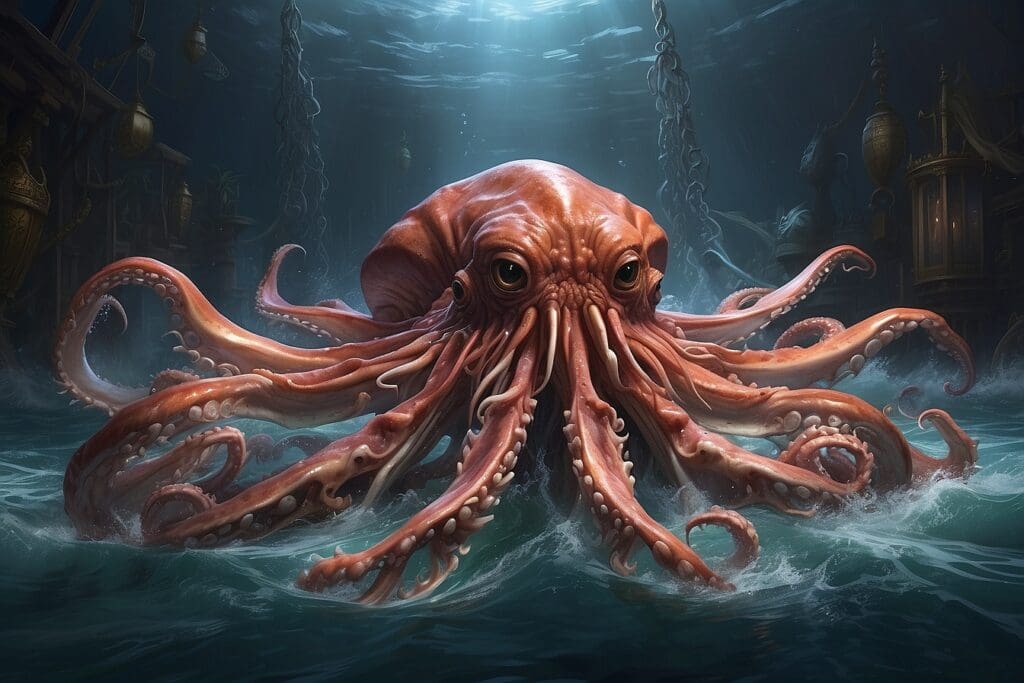I remember in my junior year of high school in San Diego, California, my Environmental Science teacher hosted a field trip like no other – giant squid fishing. It was the talk of the school. What was most interesting to me was when and how this became popular—it came at a time when the squid were getting closer and closer to shore. Before we get into the reasons why, let’s explore these fascinating creatures of the deep.
Humboldt squid, also known as Jumbo squid, have an average life span of a year and can grow to be up to six feet long. These squids were once so rare that scientists could only examine them when their dead bodies washed onto shore. Such occurrences have become more and more frequent, with carcasses washing up on the shores of Florida1, California2, Australia3, and other coastlines near the habitats of these natural giants. Like other species of squids, Humboldt squids hunt at night and in packs, allowing them to collectively attack prey, which include crustaceans, fish, and even other squid!4 These jumbo squid may migrate in huge packs, even numbering over 1000 at a time, but many do not complete the journey. Dead squid wash up all along the coast of California, especially in the Orange County4 and San Diego6 areas, with many oceanographers pointing at changes in the environment as the cause. These creatures also are extremely aggressive, but fishermen use this to their advantage by luring them with lanterns to imitate lantern fish and guiding their aggression to the light in order to eventually trap them.7 People that plan to encounter these squid must be very wary of their unique legs. Instead of the 8 tentacles characteristic to octopi, squids have long tentacles with suckers along it. These suckers have “claw-like” hooks inside to latch onto prey easily, making them extremely dangerous.8
 9
9
In the last decade, this animal which was once rumored to not exist at all, has surfaced on many shores. This is because the Jumbo squid populations have started to hunt closer to shore. We do not truly know the extent of the Humboldt population but they do seem to be having a population spike due to the ocean dead zones may be driving up the Humboldt population as well.11
There are many predictions as to why these almost mythical creatures have been coming closer and closer to our world, becoming a threat to humans. One is that their main predators (sharks, sperm whales, seals, etc…) are dropping in population, allowing their population to grow. Also, the general change in climate12 has pushed these squid farther on to shore. In short, scientists have no idea why they are approaching the shore because there is so little known about these mysterious creatures. However, we do know the effects it is having on the local ecosystems.
https://greeniacs.10web.site/GreeniacsArticles/Wildlife/Overfishing.html”>over-fishing these creatures, it is the most efficient and economical way of controlling their growing populations in shallow waters.

And so brings us back to the beginning – my Environmental Science teacher brought back enough calamari steaks to feed 2 classes of 30 and a couple of teachers. Humans effect the environment in every way imaginable, so it is important to at least acknowledge our power and consider the positives and negatives that may result from our actions. This also illustrates the problems environmentalists and scientists face when problems demand solutions but do not provide enough details. There is not always a way of telling the direct effects of an action until after it has been done. But for now, these giant squids have become a new sport enjoyed by the few that know where to go and are brave enough to face these mysterious creatures of the deep.





